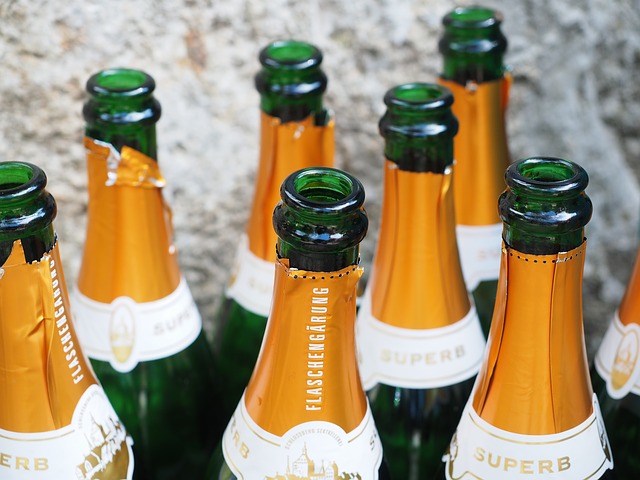
Celebrate Everyday with Sparkling Wine!
Champagne* is for celebrating. It is synonymous with happy times and new beginnings. In North America, historically, that meant New Years’ Eve, birthdays, anniversaries, weddings etc. That has changed! I like to believe that every day above dirt can be a celebration, and although we may not be able to afford actual ‘Champagne’ for every one of these moments, there are many lovely sparkling alternatives that won’t break your budget. Understanding the differences might help you decide just which sparkling wine fits your current joyous occasion.
* For those that may not know, Champagne is a sparkling wine, but not all sparkling wine is Champagne. Champagne comes only from the region of Champagne France, which is about 90 miles east of Paris. All other sparkling wines, are just that; sparkling wine. (Even though some producers still continue to label their sparkling as ‘Champagne’; confusing and misleading consumers)The only grapes used to make Champagne are Chardonnay, Pinot Noir and Pinot Meunier.
Champagne was originally a still pale pink wine that was (accidently) bottled before it had stopped fermenting. (Early 17th century) Winemakers did not realize that cold temperatures in winter would stop fermentation, even if all the sugar hadn’t been converted into alcohol yet. So naturally once the weather warmed up, the wine started fermenting again in the recently bottled wine; trapping the CO2 inside, creating a fizzy wine. Often, the pressure would be so great that it broke the thin glass bottles used at the time. (The English glassmakers quickly developed stronger bottles to handle the pressure) This is a method that is still used in other parts of the world, and is referred to as Methode Ancestrale, or Pet Nats (Petulant Naturals)
By the mid 19th C, it was discovered that adding a bit more sugar, and yeast to an already still wine, and then bottling it, could induce a second fermentation, creating greater pressure, and longer lasting bubbles. Simultaneously the dead yeast cells, (inside the bottle) created interesting and complex flavors in the wine. This is how Champagne came to be, which is essentially a wine that sees a second fermentation in the bottle, time on its lees (dead yeast cells), and later, after the dead yeast has been disgorged, sold in that same bottle. In Champagne the minimum time, by law, a Non Vintage wine sees on its lees, is 12 months, although many Champagne producers extend this time by months, and often years.
Champagne became so popular, that other countries wanted to recreate them, with many even copying the regional name to promote (and mislead) their customers. As the years passed, laws were created to protect the Champagne name. Thankfully, today, there are other wines that are made following this method from all over the world that carry the words ‘traditional method’ on their label, but are usually a bit less expensive. Cava from Spain, Cremant from other French regions, Methode Cap Classique (MCC) from South Africa, Franciacorta from Italy and many from the New World, are all examples of wines made in the traditional method.
By the beginning of the 20th C, methods had been invented to produce sparkling wine in greater volumes, more economically and faster. This helped keep up with the growing demand, and allowed people at lower income levels to participate in enjoying bubbles as well.
The fast economic way to induce a second fermentation in larger volumes of bulk wine is called the tank method (aka Charmat, Mionetti,cuve close and others). These wines are created by adding sugar and yeast to wine resting in a large pressurized covered tank. The carbon dioxide created by the second fermentation, will be trapped inside the tank, with no need to bottle, riddle, or age the wines. This method preserves fresh fruit aromas and flavours for easy everyday drinking wines meant for early consumption such as Prosecco, and Asti Spumante, among others.
The least expensive way to add bubbles to wine, is to simply add carbonation directly to a finished wine; either by injecting it into a closed tank of wine or running the wine through a carbonator, and then bottling it. Many Vinho Verdes from Portugal, sparklers marked ‘Secco’ from Germany, and countless others from Australia, New Zealand and the USA. These are the truly cheap and cheerful, with the bubbles often fading rather quickly, but great for afternoons by the pool, light patio dinners on warm evenings and lazy Sunday afternoons.
Try one (or all!) of the Sparklers listed below. They are readily available in the Nashville market and beyond.
Jacques Copinet NV Blanc de Blanc Brut Champagne (France)
Made from 100 % Chardonnay, this wine has a delicate mousse that fills your mouth with flavours of baked apples, pears and buttery pastry. This is a grower champagne, with approximately 4000 cases produced each year, made in the traditional method with long ageing on lees. Great with smoked salmon, salty cheeses, shellfish, special occasion and celebrating being alive!
Canti Riccati Prosecco (Italy)
This sparkler has plenty of bubbles, with flavours of lemon, lime and crushed SweeTART® candy. Prosecco is made from the Glera grape, and is almost always made in the tank method discussed above. This is a hit at any party and perfect before a meal; with charcuterie, cheeses, tapenades and stimulating conversation.
VS (Von Schleinitz) ‘Secco’ (Germany)
This is a great everyday sparkler. Do not be mislead by any misconceptions you may have of the grape which this carbonated sparkler is made from; Riesling. This is a dry wine (as the word ‘secco’ implies). There is plenty of juicy citrus and melon, balanced with acidity and a clean light finish. It pairs well with sushi, Indian or Thai food, Sunday brunches, or sitting on the porch with friends, solving all the world’s major problems.
8/30/2015
.
[/vc_column_text][/vc_column][/vc_row]



